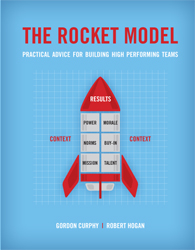 Morale can be defined as a group or team’s cohesiveness or esprit de corps. Strong emotional ties, close relationships, and high levels of trust between members are the mark of high Morale. Members of high Morale teams often say they would do anything for their teammates; in some cases (combat teams or firefighting crews), members are willing to die for their units. Conversely, low Morale groups and teams contain members who will easily sabotage others if doing so furthers their own careers.
Morale can be defined as a group or team’s cohesiveness or esprit de corps. Strong emotional ties, close relationships, and high levels of trust between members are the mark of high Morale. Members of high Morale teams often say they would do anything for their teammates; in some cases (combat teams or firefighting crews), members are willing to die for their units. Conversely, low Morale groups and teams contain members who will easily sabotage others if doing so furthers their own careers.
Morale is the component of the Rocket Model© that is most easily observed by outsiders; it is also the primary reason consultants are asked to do team building. However, team leaders are often unable to assess Morale because teams may appear cohesive, but have high levels of covert conflict. This covert conflict is due to norms that require employees to be team players even though they despise one another. The members of these teams smile, nod their heads, and endorse team decisions but secretly resent the process. Leaders need to recognize and deal with this mismatch between members’ private thoughts and public actions if they want functional teams.
It is important to distinguish between engagement, cohesiveness, and conflict. Engagement concerns members’ willingness to put effort towards team and group tasks. Members with high levels of engagement take their roles seriously and go above and beyond the call of duty when it comes to getting things done. Engagement is quite different than cohesiveness. Members can all get along but not exert any effort towards team tasks, and highly engaged employees may not particularly like each other. Conflict is related to, but somewhat distinct from, cohesiveness. Teams with low or high levels of conflict may not be particularly cohesive. Often the most cohesive teams are those that experience modest amounts of conflict and have developed ways to get issues successfully resolved.
Unfortunately, many leaders are unable to resolve intra-team conflict. Some hear what they want to hear and ignore the rest. Others know that their teams are riddled with conflict but hope it will just go away. Still others may ask team members to go through team building activities such as sharing personality test results, golf outings, ropes courses, white-water rafting excursions, etc. We know a CEO who asked his dysfunctional team to go on a one-day sailboat cruise and bring ten objects with personal significance. During the cruise, they were to talk about the objects. However, many of these personal stories were leaked back to the larger organization and became sources of mockery for certain team members. This story is fairly typical—most team-building events fail to identify and resolve the sources of intra-team conflict, and have little if any impact on team cohesiveness.


 Morale can be defined as a group or team’s cohesiveness or esprit de corps. Strong emotional ties, close relationships, and high levels of trust between members are the mark of high Morale. Members of high Morale teams often say they would do anything for their teammates; in some cases (combat teams or firefighting crews), members are willing to die for their units. Conversely, low Morale groups and teams contain members who will easily sabotage others if doing so furthers their own careers.
Morale can be defined as a group or team’s cohesiveness or esprit de corps. Strong emotional ties, close relationships, and high levels of trust between members are the mark of high Morale. Members of high Morale teams often say they would do anything for their teammates; in some cases (combat teams or firefighting crews), members are willing to die for their units. Conversely, low Morale groups and teams contain members who will easily sabotage others if doing so furthers their own careers.


 The current thinking about employee engagement is somewhat misguided since leaders tend to get all of the blame for having disengaged employees. Missing from this perspective is the fact that team members also bear some responsibility for where they fall on the disengagement-engagement continuum. All leaders can do is create an environment conducive to team member Buy-In; after that, it is up to each team member to decide to become fully engaged and committed to team success. There are three things that leaders can do to foster Buy-in: 1) establish credibility, 2) paint a compelling picture of the future, and 3) empower team members.
The current thinking about employee engagement is somewhat misguided since leaders tend to get all of the blame for having disengaged employees. Missing from this perspective is the fact that team members also bear some responsibility for where they fall on the disengagement-engagement continuum. All leaders can do is create an environment conducive to team member Buy-In; after that, it is up to each team member to decide to become fully engaged and committed to team success. There are three things that leaders can do to foster Buy-in: 1) establish credibility, 2) paint a compelling picture of the future, and 3) empower team members. One important component of the Rocket Model© is Buy-In, which concerns the degree to which leaders and members are committed to and engaged in team goals, roles, norms, and success. There is an important difference between member commitment and engagement. A United States Marine corporal may be very committed to The Corps and protecting the United States, yet he may not be particularly engaged while walking guard duty at Camp Pendleton. In this scenario, the corporal will do the minimum and nothing more. Likewise, team members may be committed to the team and its goals yet not engage in the tasks needed to succeed. The Holy Grail for leaders is to create teams whose members are both committed to and fully engaged in the tasks needed to succeed.
One important component of the Rocket Model© is Buy-In, which concerns the degree to which leaders and members are committed to and engaged in team goals, roles, norms, and success. There is an important difference between member commitment and engagement. A United States Marine corporal may be very committed to The Corps and protecting the United States, yet he may not be particularly engaged while walking guard duty at Camp Pendleton. In this scenario, the corporal will do the minimum and nothing more. Likewise, team members may be committed to the team and its goals yet not engage in the tasks needed to succeed. The Holy Grail for leaders is to create teams whose members are both committed to and fully engaged in the tasks needed to succeed.